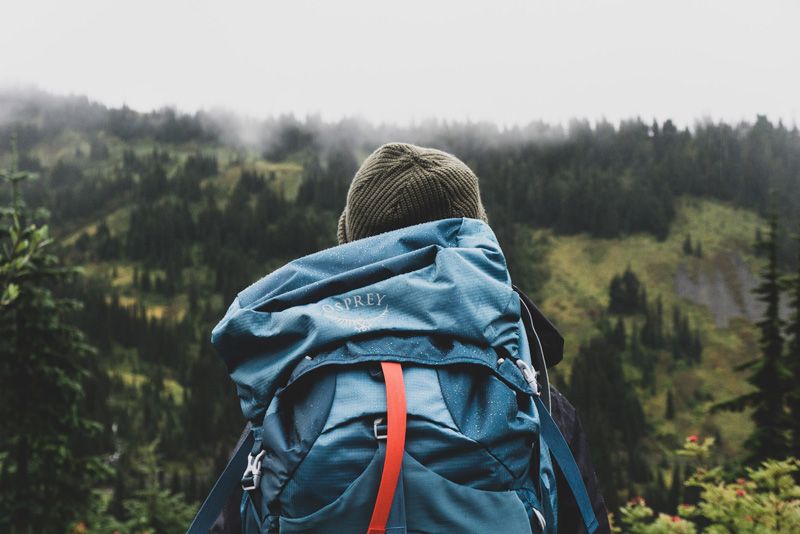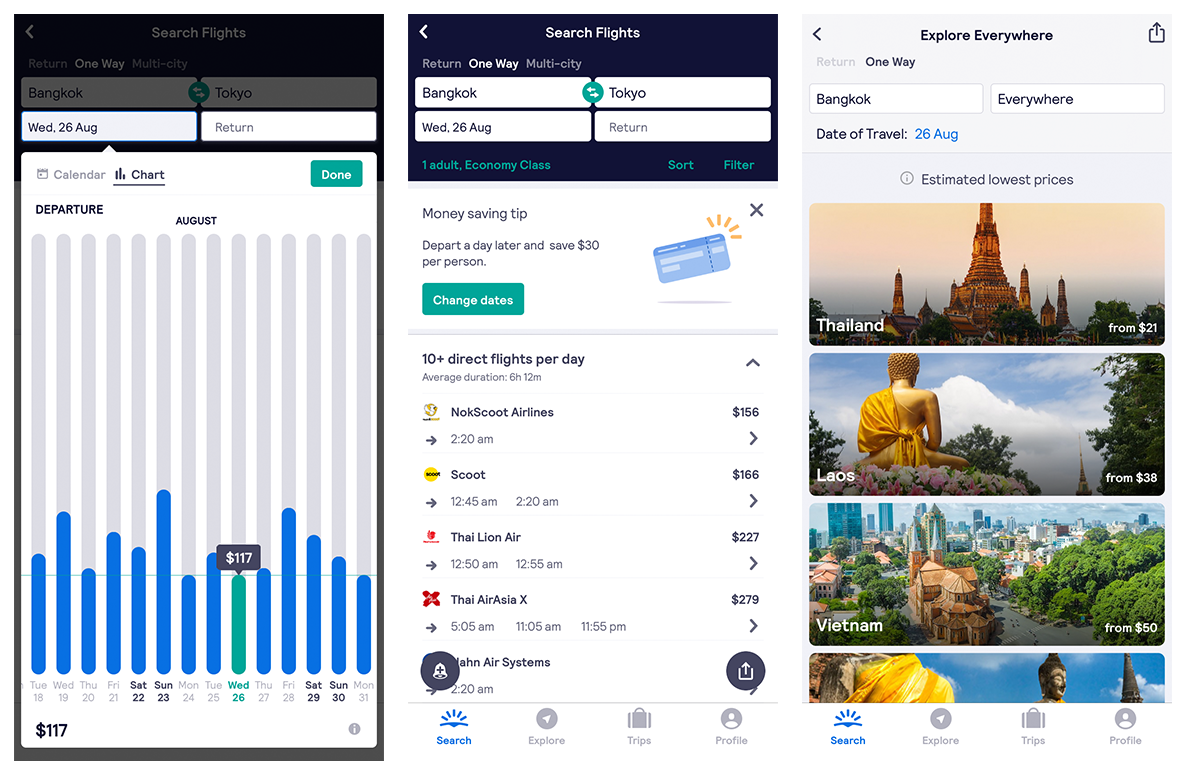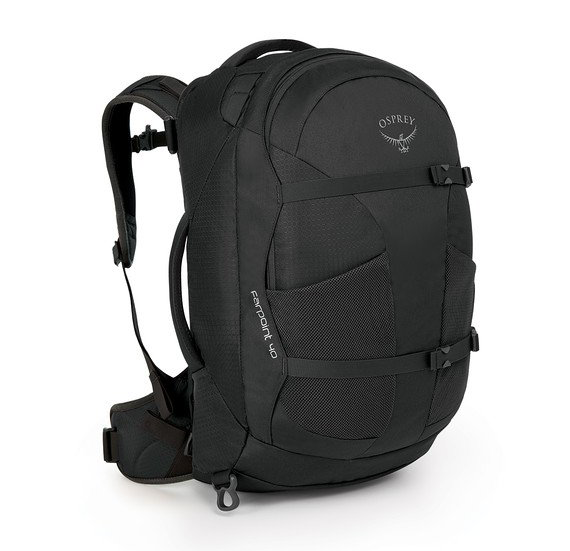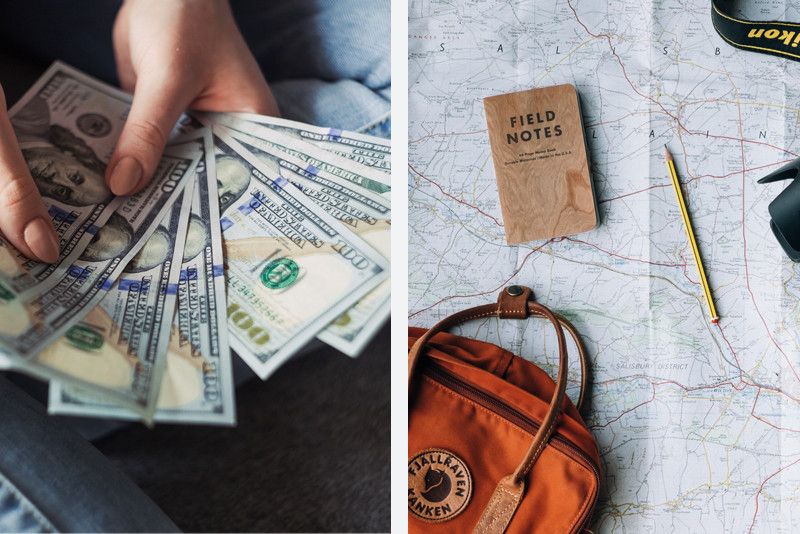How To Travel The World For Free | The Ultimate Backpacking Guide
Travel doesn't have to be expensive, it doesn't have to be difficult. In fact, with the amount of options and opportunities available today, you can pretty much travel for free, forever.

Travel. Until you start traveling, it seems like this elusive thing. Something you need to take time off work, save a crazy amount of money, plan heavily, and stress about for all of eternity. Then you take the two weeks off and are back in the rat race, wondering if it was all a dream.
It doesn’t have to be like that, and indeed it isn’t. Travel doesn’t have to be expensive; it doesn’t have to be complicated. In fact, with the number of options and opportunities available today, you can pretty much travel for free, forever.
Be prepared because you’re about to get a crash course in traveling the world on a dime in this guide. And I’ll be your captain for today.
Table of Contents
- How To Live The Dream
1.1. Minimizing Expenses
1.2. Earning On The Road - How To Get Cheap Flights
2.1. Flight Booking Apps
2.2. The Cheapest Seasons To Travel
2.3. Luggage - traveling light and cheap - How To Get Cheap or Free Accommodation
3.1. Cheap accommodation
3.2. Free Accommodation - How To Get Cheap Food, Entertainment, and Save On Fees
4.1. Food and Fun
4.2. Travel Card, Currency Exchange & Money - Making Money While Traveling
5.1. Teaching English or other languages
5.2. Working and Volunteering in Local Businesses
5.3. Freelancing Remotely & The Digital Nomad Life - Summary & Final Remarks
6.1. Key Takeaways
How To Live The Dream
Wealth consists not in having great possessions but in having few wants. — Epictetus
Here are the few desires of a backpacker, aka. You.
- Travel the world
- Have amazing experiences
- Meet amazing people
Everything else is secondary, and lucky for us, this means we don’t need much. And by that, I mean we won’t have many expenses, and we won’t need to make that much money while traveling to actually keep up this lifestyle.
Free travel doesn’t involve a millionaire giving us their fortune. Free travel is integrating fulfilling travel-based work into our routine while keeping our expenses down. It’s the most straightforward, most comfortable, and most rewarding decision you might make at this point in your life.
The name of the game is to have as many new and unforgettable experiences as possible, for as cheap as possible, feel productive while doing it, and make money while doing it as well.
If you decide to stop, you’ll either break even or, most likely, you’ll have a good deal of savings. It’s not crazy; it’s reality.
We do this in 2 steps.
- Minimize travel expenses
- Make some money while traveling
Minimizing Expenses
The 3 most significant expenses for travel are the following:
- Flights and Transport
- Accommodation
- Food, Fun, and Fees
We’ll break these down one by one in the coming sections while including tips, tricks, apps, services, and other methods to find the best deals, spend less, and experience more.
Earning On The Road
If you’re thinking I’m going to suggest a 9 to 5 like back home, with weekends for travel, you can be sure that there’s no way that we’re doing that.
Backpacking is the forefront of what we’re trying to do. We’re going to cover non-intrusive and perfectly integrated ways of making money while being on the road. Working in hostels, teaching English, and doing remote work are just some of the ways that you could spend a few hours each day, or every other day, working and earning enough to stay on the road forever if you want to.
How To Get Cheap Flights ✈️
First of all, let’s break down Flights.
Flights can be incredibly cheap, but because most people are used to traveling like holidaymakers or vacationers, this becomes very expensive.
Flight Booking Apps
One of my favorite features of Skyscanner or Google Flights is that you can browse a particular flight by day, and at a glance, see which days are cheaper with graphs. So right now, you could punch in your city and destination and browse month by month to find the cheapest flight.

Another cool feature is that you can type in your city and select “everywhere” and get a whole list of countries you can get to on the cheap. Perfect if you’re not sure about where to go.
Other cool features
- You can build trips right in the app by saving routes you find.
- You can set up pricing alerts, so you get emails when there’s a price change.
- It’ll automatically tell you if there’s a cheaper flight close to the date or a cheaper airport that’s close to fly out from - and prompt you to switch.
Resource List - Some other great sites and apps
- Rome2Rio - Fantastic for land-based travel. It’ll give you buses and trains through popular routes (great for Europe and South America). It also gives you flights, but I’d recommend Google Flights or Skyscanner for better results in that domain.
- 12Go Asia - Much like Rome2Rio, this is one of the better agencies for land and sea-based transport, but as the name suggests, it’s for Asia. Very useful, especially for night trains and buses.
- Scott’s Cheap Flights - An email newsletter that sends excellent finds to your inbox. They have a free and premium version. You’ll get some great little finds, even with the free version.
Hot Tip #1: When it comes to flying, having a specific email just to subscribe to airlines’ lists is excellent. With budget airlines especially, there can be obscenely cheap international flights.
Hot Tip #2: If you have a credit card, or you’re looking to get/change one, there are a lot of them that give you the same interest rate and interest-free period but will also bundle in points towards airfares. Especially if you have regular expenses like rent, these points add up quickly, and you can be sure to get free flights from it.
The Cheapest Seasons To Travel
It’s no surprise that if you go to a country or city when there’s a big event, prices for everything, especially flights, will be jacked up. It’s all supply and demand. So we can safely tell that the cheapest flights will be during the times where there aren’t as many people visiting.
These changes don’t just happen for events; they happen seasonally. Summer in Europe is a hot spot for a ridiculous number of tourists, and the same for spring in Southeast Asia.
And all of this is for a good reason. Summer in Europe is beautiful, but winter gets to some crazy low temperatures that most people don’t like. So what do we do? Low season travel is very cheap, and a lot of the times very much worth it, but there’s also a happy medium here; there are the shoulder seasons.
Traveling during low/shoulder seasons is one of the main ways you can get some cheap flights. I’ve got a full guide with some examples below.

Luggage - traveling light and cheap
Another essential aspect of flying is your luggage.
If you’re bouncing around from place to place, you need to travel with the bare minimum. And I’m talking just a carry-on bag. You can save an incredible amount of money by not checking in your bags. And it’s 100% doable.
The dimensions for carry-on allowances for most airlines is 56cm x 36cm x 23cm or 22" x 14" x 9".
This definitely varies but not to the extent you should be worried about. The one thing to keep in mind is some European budget airlines like Ryanair use quite a few predatory strategies to get as much money out of you as possible - and that includes smaller bag dimensions.
For most cases, the best bag on the market for carry-on only travelers is the Osprey Fairpoint 40, which is the perfect dimension and has enough space to fit everything you need. You can find a full review here.
Or you can get it directly on Amazon, using this affiliate link:https://amzn.to/2RB7An8.

There’s also the Osprey Fairview 40, that’s a slight change in sizing to cater to the ladies. Not that I’ve heard any complaints about the Farpoint 40.
Amazon affiliate link to Fairview 40 here: https://amzn.to/35gRCm0
Again, most airlines will have similar dimensions, and as for weight, it’s usually 7kg a bag.
Now that you know all this, it’s good to remember that a lot of this isn’t as important as you think in practice.
You won’t get weighed 90% of the time. You’ll see people with bags that are obviously outside the dimensions specified. Don’t stress too much about the specifics. As long as you cover the basics. You’ll be fine.
Other packing pro tips
- Take one pair of shoes and flips flops. Get shoes like these that you can use for almost anything. Get them all black, dress them up and down, go for a run or workout, light trekking even.
- Don’t pack things you can buy/find at your destination. Don’t bring tubs of sunscreen, toothpaste, a hairdryer, etc. You can find almost anything abroad and won’t need that stuff to weigh you down.
- Your laptop and small camera don’t count most of the time. If you travel with these, many airlines won’t count them in your carry on if they’re in your hands as you walk aboard.
- These bags will help you organize your life. Make sure you get ones that are breathable for when you’ve got damp clothes.
- A travel neck pillow, travel towel, fold-able backpack, and earplugs are some of the smaller but life-saving items in your kit.
You can get everything I’ve mentioned above with the Amazon affiliate links below - But a lot of it is available everywhere, so use what you’re comfortable with.
Packing cubes - https://amzn.to/36mpuOu
Neck pillow - https://amzn.to/2RveMRT
Travel Towel - https://amzn.to/2s92EeC
Fold-able backpack - https://amzn.to/2YzC0HK
High quality ear plugs - https://amzn.to/2E0SeAz
How To Get Cheap or Free Accommodation 🏠
Cheap Accommodation
Let’s start with the top tips for cheap accommodation. Firstly, hotels aren’t the right way to go, and frankly, they lack the social, adventurous, and cultural aspect that you’d otherwise get at a hostel or home-stay.
Here are the best websites and apps to find cheap accommodation.
The best way to get the accommodation you want at the price you want is to basically use these sites as a catalog, find something you like, and go into the establishment without booking and book direct with the hostel.
Most of the time, they won’t charge the fee that the middlemen charge, and you’ll get a better deal. If it happens to be the same or more, just book right then and there on the app instead.
Hostels
- Southeast Asia — $5 to $15 per night
- Eastern Europe — $7 to $15 per night
- Western Europe — $25+ per night
- South America — $10 to $15 per night
(Prices in USD based on the sites mentioned above)
Dorm style rooms range from 4-person to 8-person, and sometimes crazy amounts where it’s 20+ in one large room. Don’t let that scare you; especially in Southeast Asia, the hostels are absolutely beautiful.
The beds are comfortable and clean, the facilities are modern, the atmosphere is fantastic, and you have a whole ‘share house’ feel with many other backpackers that are on a similar journey to you. Hostelworld is my go-to to discover hostels that have a great atmosphere.
Suppose you’re living in a reasonable or expensive city right now. In that case, chances are that staying at a hostel will be cheaper than your current rent and less expensive even when you factor in your daily spending habits.
And look, It can get loud depending on the type of hostel you’re staying in, so definitely check whether you’re at a party hostel or a more relaxed one.
The best part about hostels is that they can be free, provide you with free food, and actually make you some money.
We’ll talk about that very soon.
Home-stays & Host Families
If you’re looking for a more cultural experience, several families in each town offer up a room in their home. You get to live, eat, and spend time with the locals instead of other backpackers.
Sometimes paying a bit extra at these home-stays is worth enjoying real, local cuisine and having a room to yourself, although it can be a dorm as well.
One thing to consider is that some hostels/hotels will put home-stay in the name, so if you’re looking to find an actual home-stay with a family and such, you need to look a bit harder. Searching for host families or going through recommendations is your best bet.
This is the most popular service to find some quality homestay accommodation.
Free Accommodation
Yes, you can absolutely stay in places for free. Here are some platforms and methods that let you do just that.
Couchsurfing.com — People list their couch, spare rooms, air mattresses, and beds on here for travelers to crash. You can easily set up a profile and create an exciting bio, so your potential host is happy to accept you.
People list their rooms here for multiple different reasons. They may have traveled before and want to meet more backpackers; they may be proud of their town and want to show people around.
Just be aware, and look at reviews. Although it’s very safe, I’ve known instances where some guys set this up and use it in place of Tinder... They accept female travelers and hit on them throughout their stay. As you can imagine, this can be very uncomfortable for people, so make sure the reviews check out before going in, especially if you’re a lady.
House or Dog Sitting — Several services let you sign up for a fee or even free, enabling you to mind people’s houses, aka. Live there while they’re away for free.
There are a few that are quite good and worldwide at that.
The pros of this are that with a small fee, you get almost unlimited accommodation. You get to stay in large houses/apartments, most likely with stocked fridges that the host is more than happy to let you demolish.
The cons are that you might not get your pick of litter before you build up your profile and become more trusted with some of these. You don’t have unlimited options, e.g., wanting to go to Ibiza and stay there for free might not be in the cards, but there might be a place outside of Naples. This isn’t a big deal for the fluid traveler, but if you’re looking for a particular area, you might want to leave this for another time.
Working in Hostels — This is my favorite. No matter which hostel you’re in, you’ll always find a ‘volunteer.’ Volunteers usually stay for free, eat for free and get a weekly allowance at the hostel for a few hours of work every day.
This isn’t income replacing stuff, but the fact that this offers you a chance to really explore a town/city, have a small social circle, and the ability to meet new people and socialize day in day out is an absolute win for so many backpackers.
You’re traveling and having fantastic experiences daily, yet your time abroad isn’t even making a dent in your budget.
How do you become a hostel volunteer? Are you good with people, speak English, and are around for a while? If the answer is yes, the hostel you’re in will most likely hire you. It’s an excellent deal for hostels; they get almost free labor while you get free board and more. It’s a win-win.
All you have to do is ask. If they don’t have an opening, one of the other hundred hostels in the area likely do.
Camping — Not so much for Southeast Asia, but for Europe, there are several countries like Scotland and Poland with free pitching, i.e., you can legally pitch your tent pretty much anywhere without paying anything. This is good news, especially if you like camping.
There are excellent spots all around Europe where it’s not only cheaper to camp, but it’s a fantastic experience in itself that might warrant further research if you’re interested.
Getting a tent is as easy as walking into a Decathlon, a European camping and outdoor equipment chain, and buying their 22 euro tent.
How To Get Cheap Food, Entertainment, and Save On Fees 🍰💃💰
Food and Fun
This is your Hot Tip #1 for every major city during your travels when saving money: Get out of the city center.
Everything in the city center for most developed cities caters to business people and tourists. The prices are high, and although the quality might be there, you can absolutely do better.
This is almost always given in terms of food and fun. So this is where you can rely on the collective knowledge of backpackers and travelers alike.
TripAdvisor and Google Maps are your best friends.
TripAdvisor has a plethora of lists, recommendations, and is an excellent forum for everything Travel. While the Explore tab in the Google Maps app for iOS and Android have many bars, restaurants, and more to discover outside the city center, with price lists.

Hot Tip #2 — Cook your own food in expensive cities.
Another thing to keep in mind while trying to keep food expenses down is that in expensive cities like Paris or Amsterdam, the food prices can be high enough that it’s worth cooking your own food.
Before booking accommodation, check if they have kitchen facilities, and a top tip here is to check pictures to make sure it’s an actual kitchen rather than a microwave in the corner.
You’re traveling, so you definitely want to try the local cuisine in many places, so don’t restrict yourself by cooking all the time to save money. However, especially in western Europe, if you can keep it light for a meal or 2. Say breakfast and a pre-lunch snack, you can save a lot for more exciting meals.
In Southeast Asia, it doesn’t matter as much as street food, market food, and general restaurants are relatively cheap. Speaking of which…
Hot Tip #3 — Street food vendors & food markets will have some of the cheapest and most delicious food you’ll eat.
The food market culture in many Asian countries is the bread and butter of an evening out. Back home, you might meet at a friend’s house, have some snacks, get an Uber to your favorite restaurant, and have a few drinks over dinner.
In Asia, you get your friends or family and go to the local night market. You buy at least 3–4 plates of different food and share so you can maximize the variety of fun your taste buds get to experience.
Depending on where you are, in a single evening, you might have downed a few chicken/pork skewers, spring rolls, tiger prawns, spicy papaya salad, yellow noodles, maybe a broth of some sort. The list is endless, and really filling up will cost you maybe 5–6 dollars.
You walk around, get a drink while exploring each stall, maybe stop in a bar, and you might listen to a busker on the street.
Local street vendors are even cheaper. A good indication of whether the place is worth it is whether there are locals and if an English menu exists. Because if the answer is yes and no, respectively, you’re in for a treat.
Travel Card, Currency Exchange & Money
When you’re on your solo backpacking trip, you’re obviously going to be spending money. A lot of the places you’ll visit will be cash based markets where the default exchange is in cash rather than card. So you’ll need to carry the local currency.
Depending on a number of factors, you have a few options on how you could approach changing currency. I've written a more comprehensive guide on this too.

Carry a sizable quantity of US Dollars — No matter where you go, you best bet they’ll accept US Dollars at a currency exchange booth. Yes, they’ll take other currencies like Euro and Pound, but the US Dollar will get you a better rate in almost every situation.
The US Dollar is perceived as less volatile, and it can be sold relatively quickly versus, for instance, the Australian dollar, which can be sold easily enough but not quite to the extent of the USD.
Pros
- Better exchange rates vs. your bank at home
- No ATM fees
Cons
- Theft risk for carrying large amounts of cash
Get a travel debit card — Your bank likely has a travel card option where you can load up your local currency and use it at ATM’s around the world to take out their local money.
This lets you keep your money safe in your account, but the downside is that the exchange rates can sometimes be sub-par, there can be ATM fees, and other fees on top of that. So you need to do your research before getting one.
A lot of these negatives can be offset if you get the right card by doing some research. There are cards out there that don’t charge withdrawal or reloading fees, and they use relatively tame exchange rates. Some even refund you any costs that the foreign ATM’s might charge (ING does this for Australia).
The easiest way to search this is by typing “[bank name] travel card” on Google. You’ll come across multiple review sites but definitely read the rules on their official sites before committing. Having backup cards is also great.
Making Money While Traveling 💰
Now that we’ve got all your expenses down, it’s time to talk about making money while traveling. If you’re looking to travel long term and don’t have an excessive amount of money saved, this part is for you.
There are practically endless ways to make money while traveling. A lot of the time, this requires almost no experience. By far, the most common ways to earn while traveling are as follows;
- Teach English, German, French, or Spanish
- Work/Volunteer in hostels and guesthouses
- Teach yoga or run fitness classes
- Be a tour guide for a particular city
- Work remotely doing multiple disciplines (skilled and unskilled)
You might even be able to pick up work in the services industry regardless of experience, but you’ll have quite a few options available if you do have the experience.
- Waiting tables
- Cooking food
- Operating a bar
- Making coffee
Teaching English or other languages
This option isn’t only for backpacking. If you’re looking to really spend time in a single country, many countries in Asia run private and government programs where you can teach English on a contract.
Japan is a prime example of this with its JET Programme. This program places you in a school, and you work with the English teacher to teach classes. They pay for your living expenses, set you up with utilities, and pay you a decent salary.
If you’re thinking, “hey that’s not a bad deal.” Then you’re in for a treat because a lot of these English teaching jobs are quite lucrative in terms of benefits.
The criteria for acceptance are usually being a Native English speaker and having a bachelor’s degree. Often, especially when you don’t have a bachelor’s degree, a TEFL or TEFOL certificate is necessary, which you can quickly get if you need it. In fact, a lot of the jobs on offer provide it for you.
Gooverseas.com is your friend here. The link right there is a critical resource in finding teaching jobs all over the world.
You can find jobs that involve
- Online teaching that’s hourly
- Salaried ‘in-person’ positions ranging from $1500-$3500 a month
- Private tutoring
- Kindergarten classes or adult classes
When it comes to a TEFL or TEFOL certificate, it involves 120 hours of training and shouldn’t be mistaken as a private/government certification body; they’re just acronyms. There are many institutions and sites that you can get them from. This blog has a list of their Top 10 certifying bodies.
Hot Tip #1 - Don’t bother looking into a visa if you’re going for one of these positions. The online application and confirmation usually come with a visa that the hiring body will pay for.
Working and Volunteering In Local Businesses
As we mentioned in the section on free accommodation, some of the most comfortable places to find work are in a hostel. Still, there are many other teaching options, such as yoga or fitness, being a tour guide, and cooking.
Depending on your skillset/location, you can do 1 or more of these by working at local businesses. On Nusa Lembongan, Indonesia, I met a couple where one was a Scuba instructor, and the other taught Yoga classes every other evening.
Both found jobs by merely asking local businesses if they needed a hand. Now they earn enough to stay in places for months at a time really, enjoying the scenery and cuisine, meeting the people, and getting to know the area.
This works best in places that have these characteristics
- Sizable tourism hot spots
- During peak season - requiring more hands on deck
- Growing hubs with lots of new businesses
Hot Tip #1: Most countries require you to have a working visa to earn money there, and this is fine if you’re going long term, but if you’re traveling with a tourist visa or a visa exemption, the common loophole is “volunteering” - this is why hostels give you board, food and an allowance (over a wage).
Hot Tip #2: In Asia and South America, many businesses will hire you off the books. And a lot of their business is conducted off the books, for that matter. There might not be a loophole for this behavior, but many people do it and get away with it. Do so at your own risk as you could potentially get a hefty fine.
Other considerations:
If you’re looking for a longer-term cultural experience, and you’re not going to be as mobile, Workaway is a great resource to set you up with a host where you’ll be helping out local businesses, NGO’s, farms, and more. It may be worth your time.
Freelancing Remotely & The Digital Nomad Life
It’s currently the wild west days of taking your laptop and working a few hours a day while traveling or backpacking. If you’re a journalist, coder, blogger, graphic designer, YouTuber, teacher, or a slew of other disciplines - you can make money on the go with little to no worries.
Why do I say wild west? Because most of the world doesn’t have a handle on the tax implications that arise. For all anyone knows, you’re just another tourist on their laptop.
The top resource for finding the perfect places to base yourself out of for a couple of months at a time is Nomadlist.
Depending on your discipline, you can earn money through:
And many more. If you already have a client base, email list, or website, you’re ahead of the game. Depending on what country you’re in, doing just a single job every week could be more than enough to pay for your travels. You just need to find your groove.
Summary & Final Remarks 👨🏫
After reading some of this article, I’m hoping that you’ve got a sense that traveling the world is more straightforward than what you might have previously thought. Getting prepared is somewhat of a hassle, but it’s all worth it if you’re out there having an adventure.
Key Takeaways
- You don’t need a lot of money to travel
- There are plenty of ways to save money and earn money while traveling
- Preparation is key when heading off on a solo backpacking journey (travel gear, flights, accommodation plans/arrangements, credit cards)
- There’s no right or wrong way to travel; you can stay in places for a few days or a few months at a time
- The collective knowledge of travelers should always be the go-to resource for your journey
You can bookmark this page if you’re looking to come back to it, or you can subscribe to the mailing list below to get more helpful guides, tips, and tricks when it comes to backpacking on a dime.
Best of luck!
Sah

